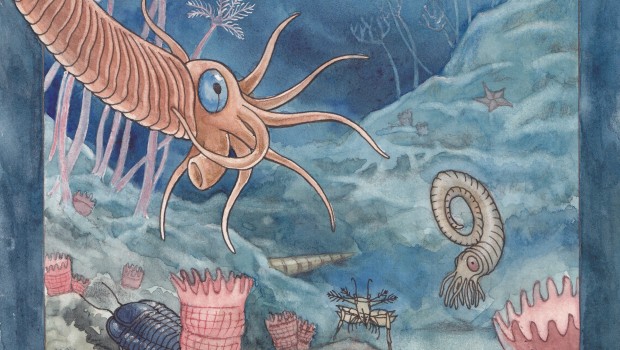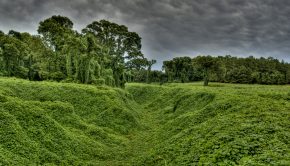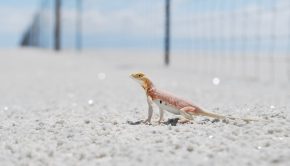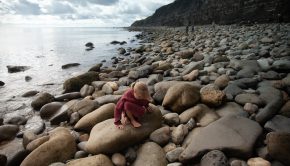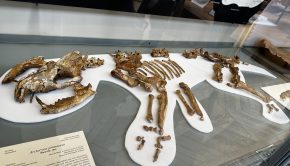Episode 17: Ammonoid evolution and ecology
Ammonoids are a diverse group of cephalopods, a group of molluscs that include squid, octopuses, cuttlefish and nautiloids. They lived for over 300 million years (from the Early Devonian – the end Cretaceous) and survived multiple mass extinctions. They finally succumbed to the mass extinction event at the end of the Cretaceous, the same event that killed the Dinosaurs. Ammonoid fossils are found abundantly around the world and offer palaeontologists a exceptional opportunity to study the evolution, life history and ecology of these fascinating invertebrates. Today we will be talking to Dr Kenneth De Baets from the Palaeontology Section, GeoZentrum Nordbayern about what we can learn about ammonoid ecology from the study of their fossils, and what this tells us about the evolution of living cephalopods.
Podcast: Download (Duration: 1:11:39 — 98.4MB)
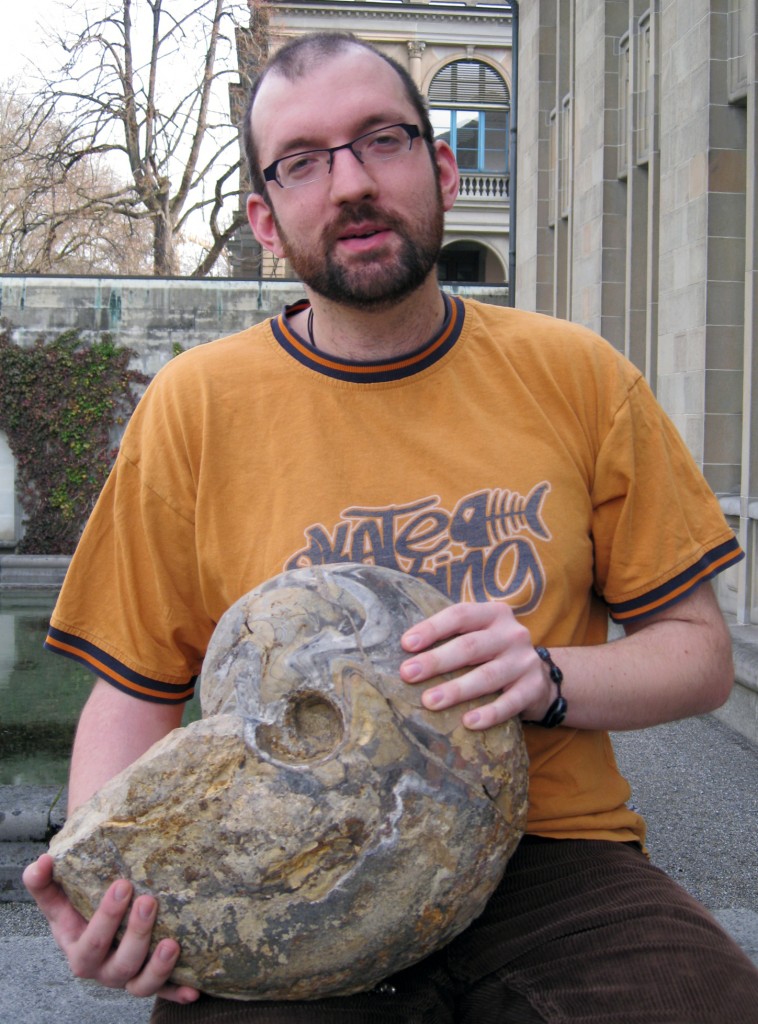
Dr Kenneth De Baets, with a mature Manticoceras, one of the largest ammonoids of the Upper Devonian. Kenneth is a palaeontologist interested in the macroevolution and ecology of ammonoids. Kenneth recently completed an SNF fellowship at the University of Bristol and has now joined the Palaeontology Section at GeoZentrum Nordbayern, part of the Friedrich-Alexander University of Erlangen-Nürnberg. Photo by Christian Klug.
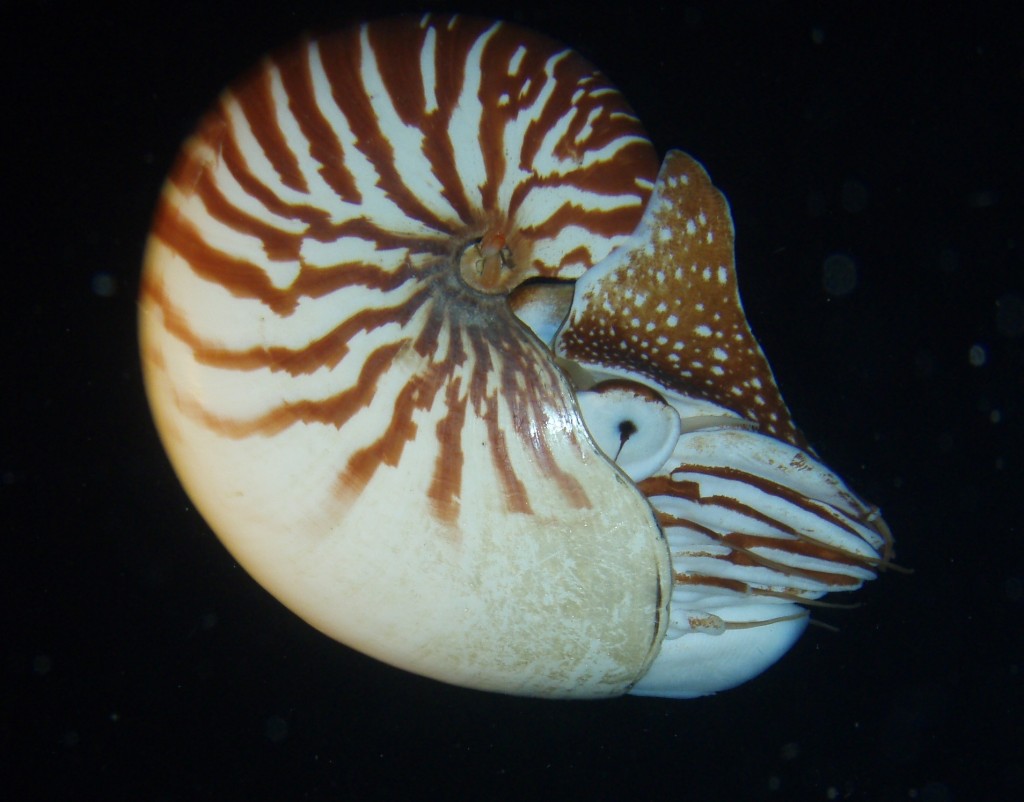
Ammonoids are a member of a group of animals called cephalopods. Living cephalopods can be divided into two main groups, the coleoids and the nautiloids. The living Nautilus, pictured above, is characterised by its many tentacles, its external coiled shell and its large, yolk-rich eggs. Photo by Pujolle. License CCBYSA 3.0
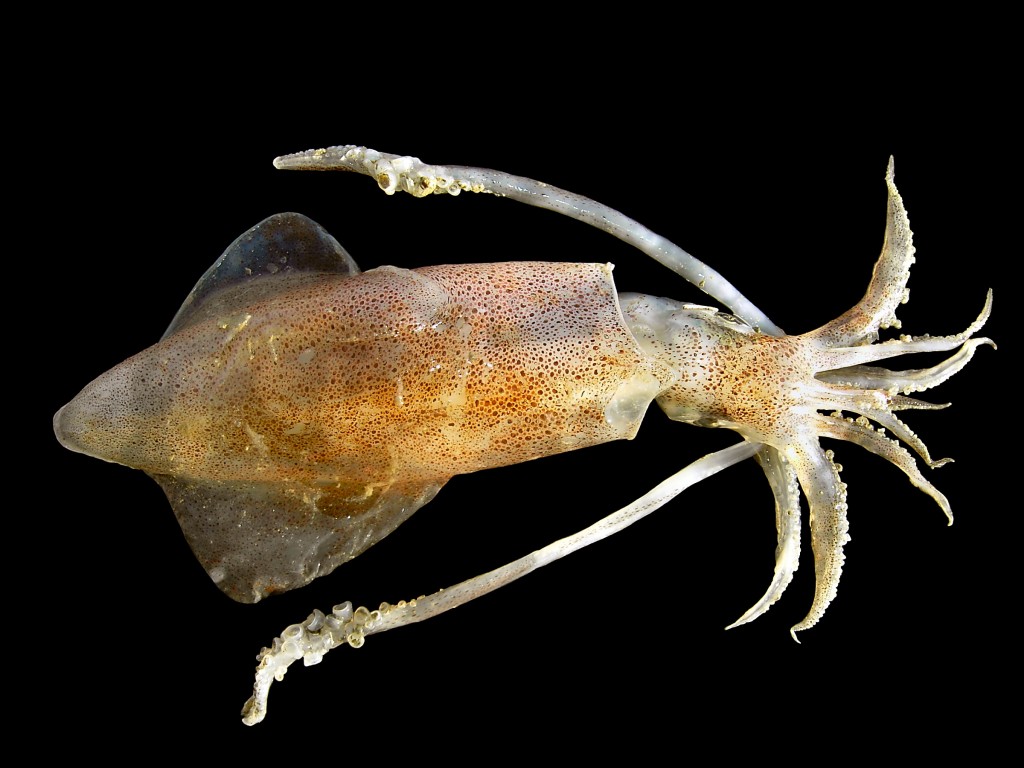
Living coleoids, on the other hand, are characterized by their internal shell, which can be strongly reduced or entirely absent in some forms (e.g., Octopus). They possess 10 arms (e.g., 8 normal arms and 2 tentacles). This group includes more familiar animals like the European squid (Loligo vulgaris) pictured above. Photo by Hans Hillewaert. License CCBYSA 3.0
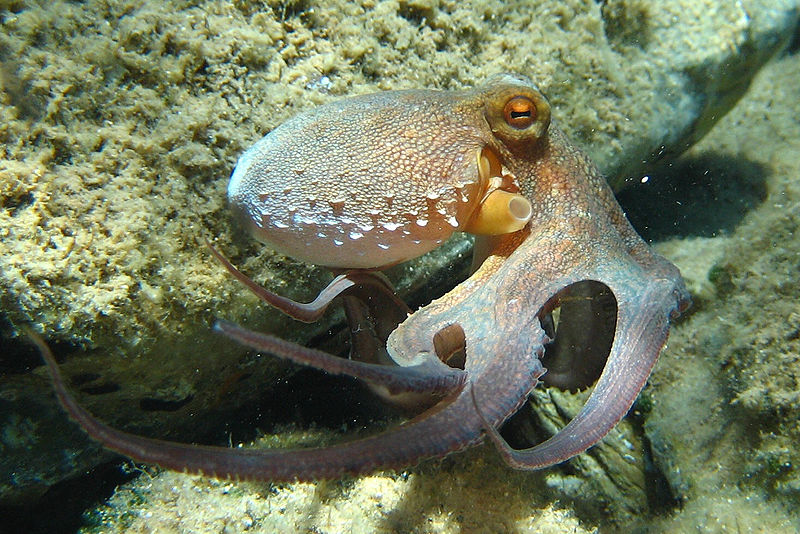
Another group of coleoids are the octopods, which have entirely lost their internal shell and have only eight arms. Above is the common octopus (Octopus vulgaris). Photo by Beckmannjan. License GFDL.
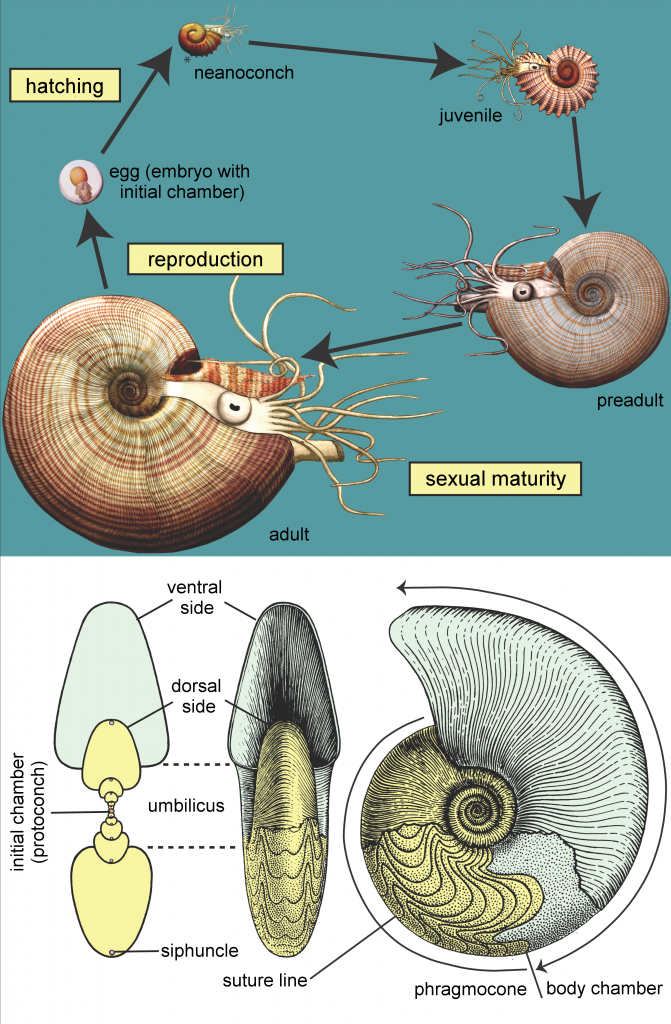
Ammonoids are a diverse group of cephalopods that were around for over 300 million years (from the Devonian – Cretaceous). Ammonoids can be distinguished from nautiloids because their shells tend to have more complex, wavy suture lines (rims of the chamber walls) than nautiloids. This diagram illustrates ammonoid morphology and life cycle using Manticoceras as an example. Image credit: Kenneth De Baets, modified from Arkell 1957 and Klug & Korn 2007.
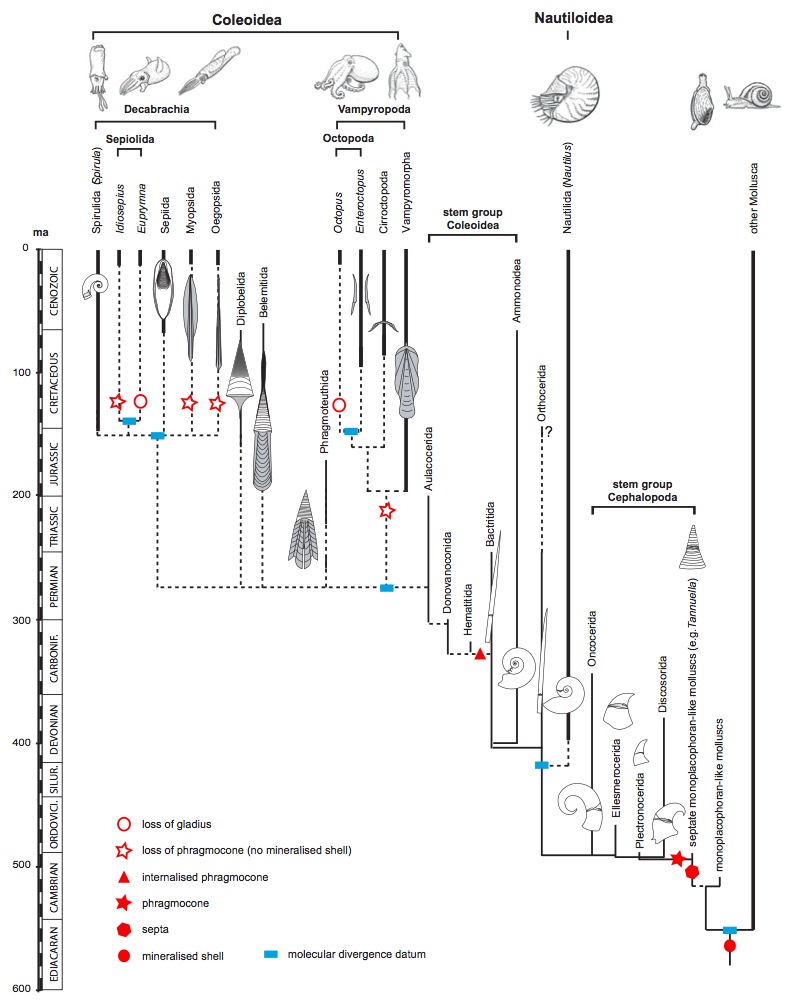
A time tree of cephalopod evolution calibrated using molecular-clock dating. We can see that ammonoids are more closely related to coleoids than they are to the the nautiloids, despite the fact that both ammonoids and nautiloids possess a similar external coiled shell. From Kröger et al. 2011 with permission of Jakob Vinther.
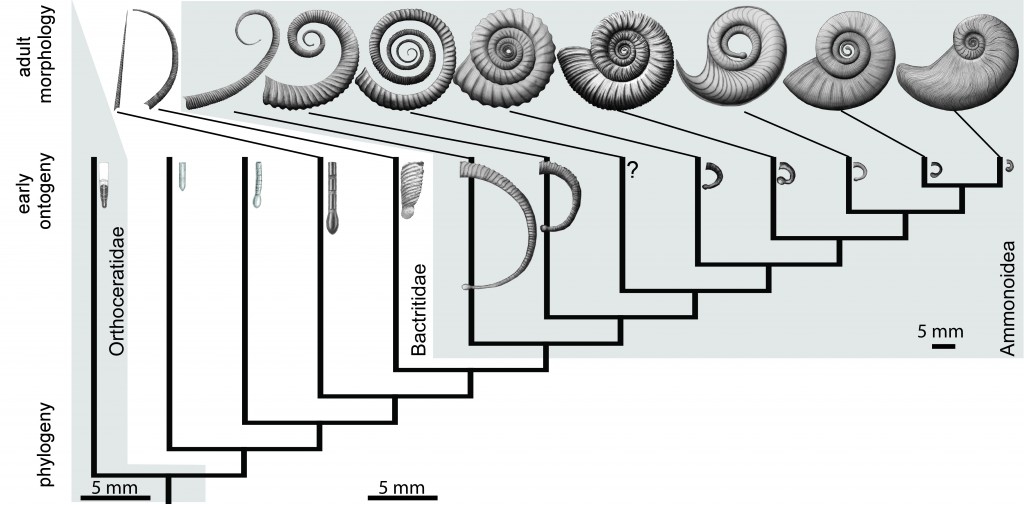
Ammonoids, which possess an external coiled shell, and coleoids, which possess an internal straight shell, evolved from a common ancestor which likely possessed an external straight shell. Modified from De Baets et al. in press.
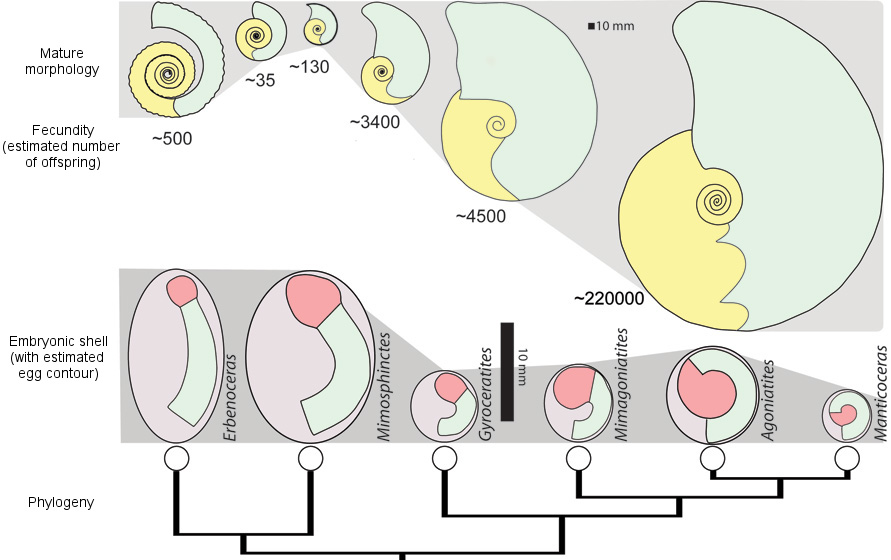
This figure shows the embryo and adult shell morphology of some Devonian ammonoids.You can see an increase in shell size, body chamber volume, and number of eggs produced as well as the decrease in embryonic shell size. Modified from De Baets et al. 2012.
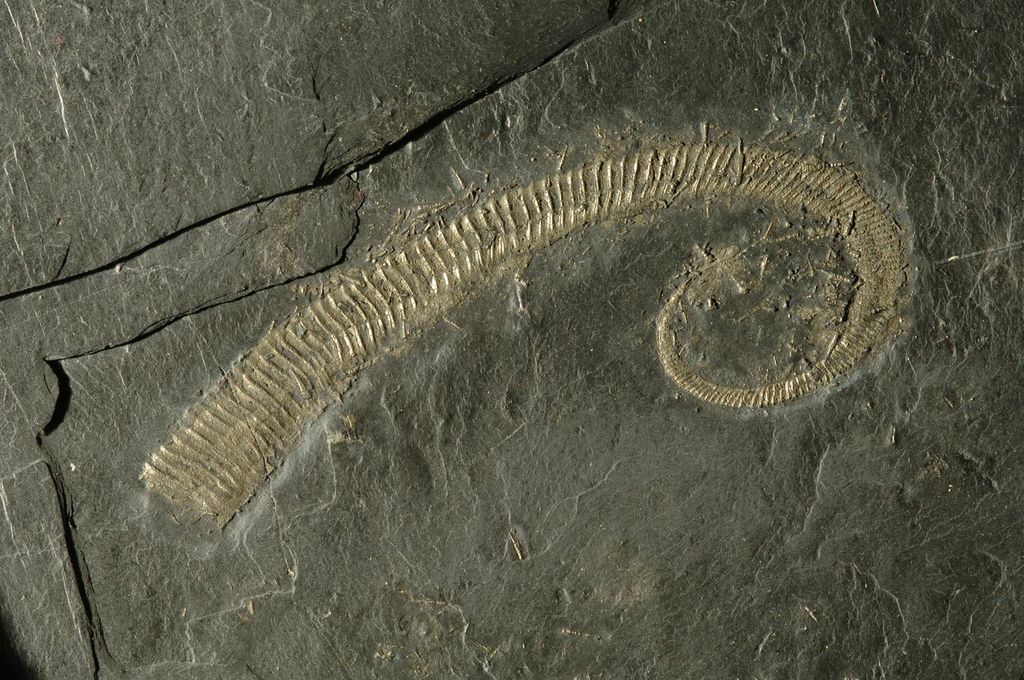
A specimen of Borivites (collected by Markus Poschmann), a loosely coiled ammonoid with a straight embryonic shell from the Early Devonian Hunsrück Slate of Germany. This specimen is beautifully preserved in pyrite. Photo by Christian Klug.
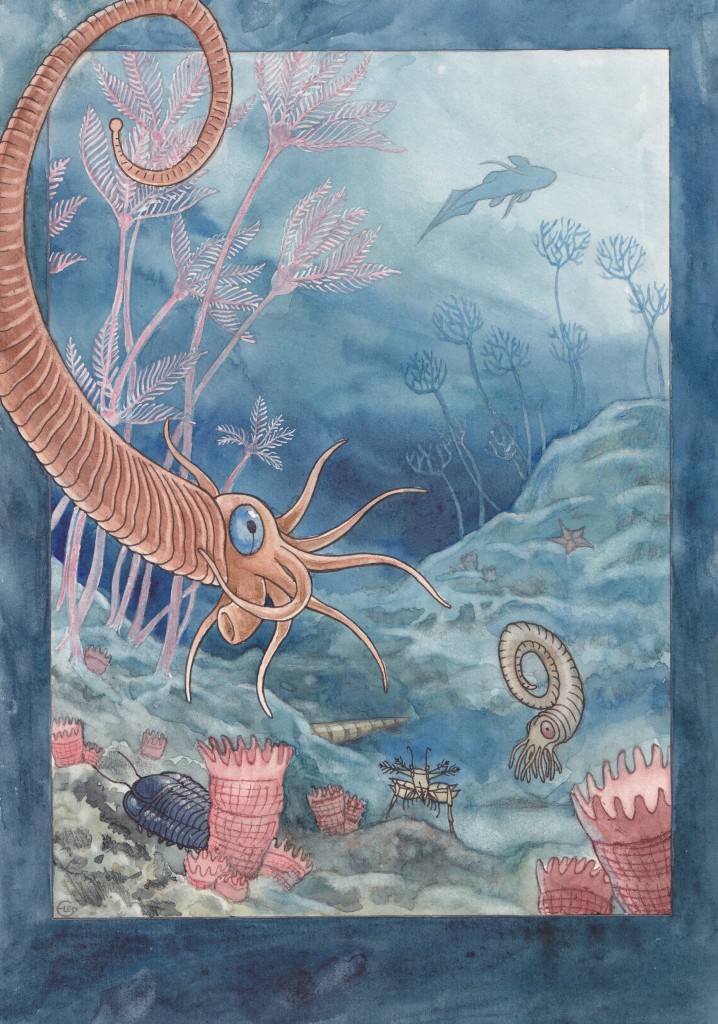
An artists impression of life in the Hunsrück Basin during the Early Devonian. Modified from De Baets et al. in press; drawing by Eleonore Ware.
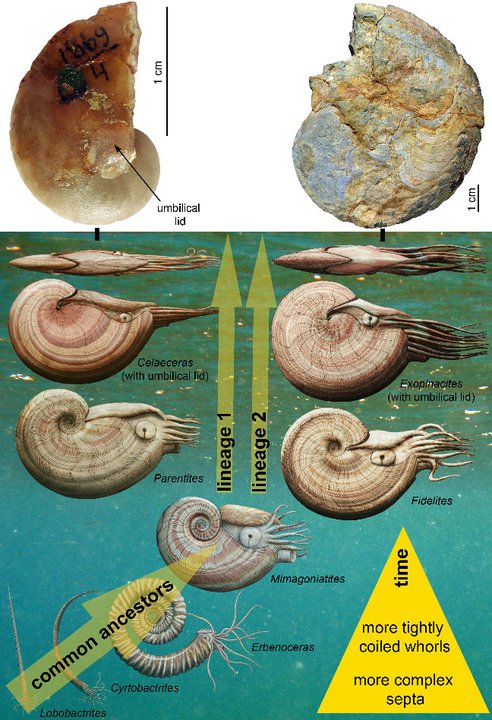
Parallel evolution of two tightly coiled lineages of ammonoids from loosely coiled ancestors. This parallel evolution of shell shape seems to have been driven by adaptations to improve hydrodynamic efficiency. Image credit: Kenneth De Baets/Christian Klug, modified from Monnet et al. 2011.
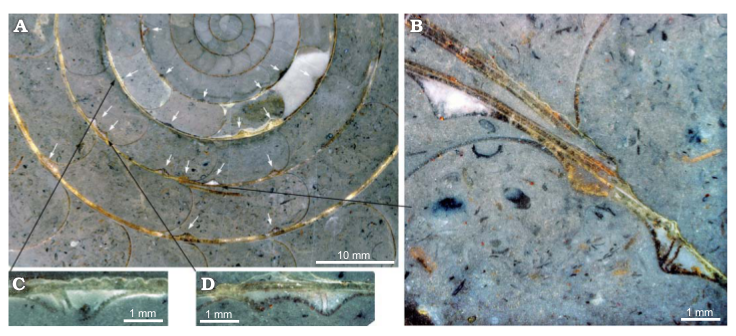
Longitudinal section through a well preserved Moroccan ammonoid shell of Sellanarcestes displaying many “Housean pits” or blister pearls caused by parasites (marked by white arrows). From De Baets et al. 2011.

